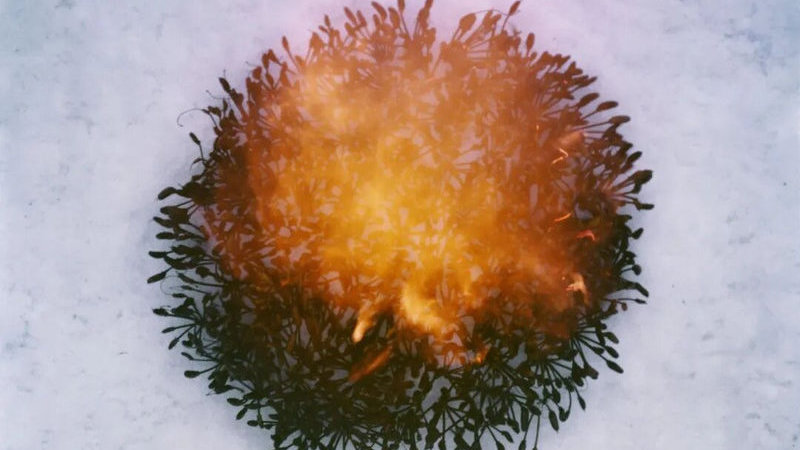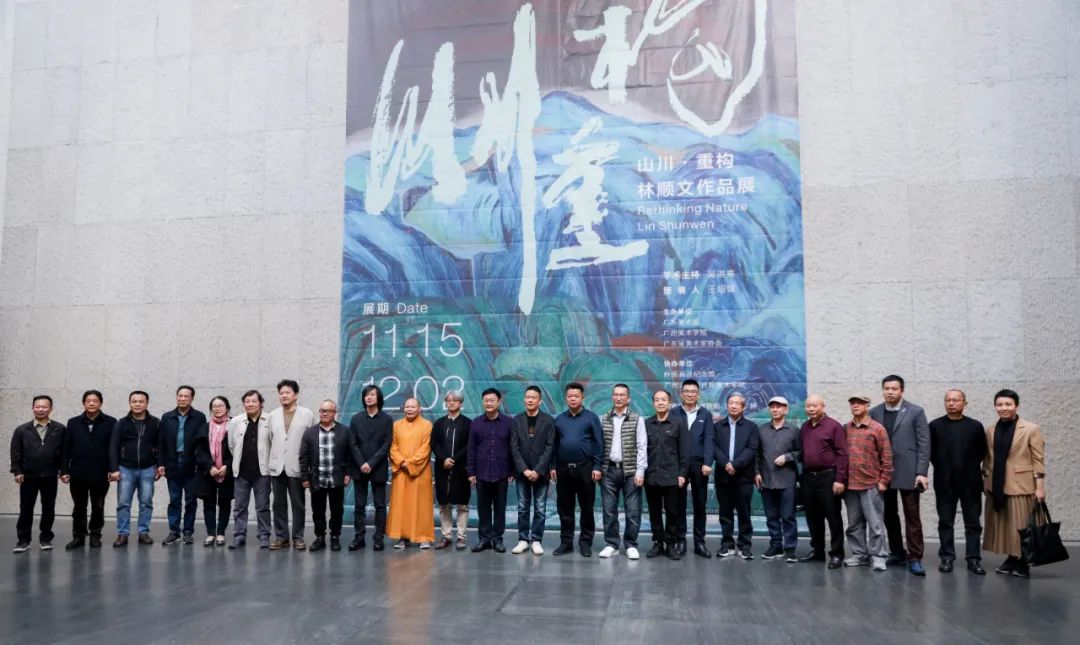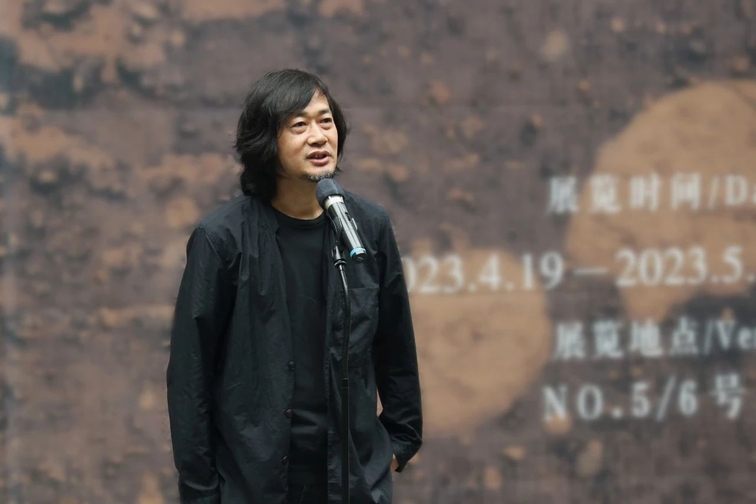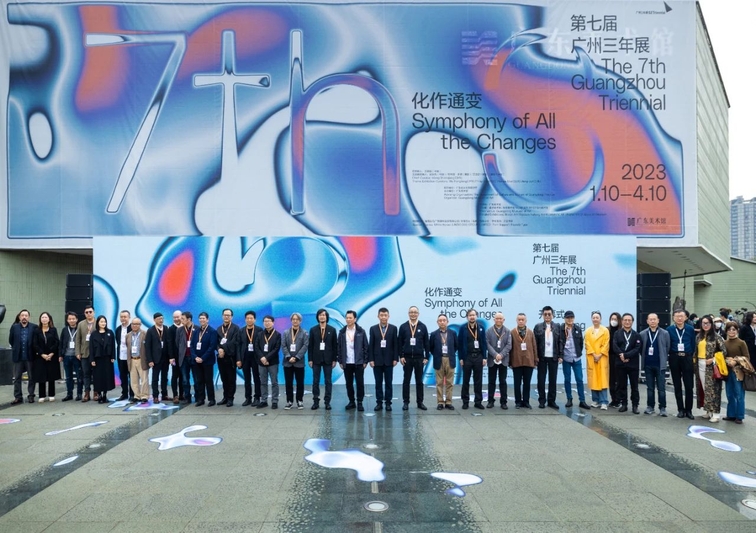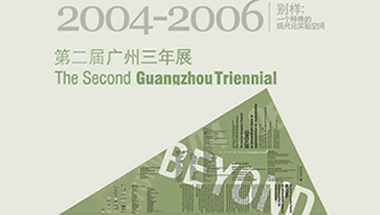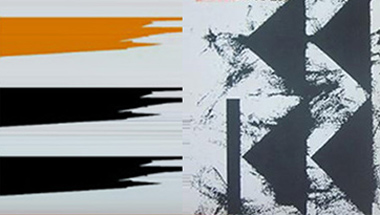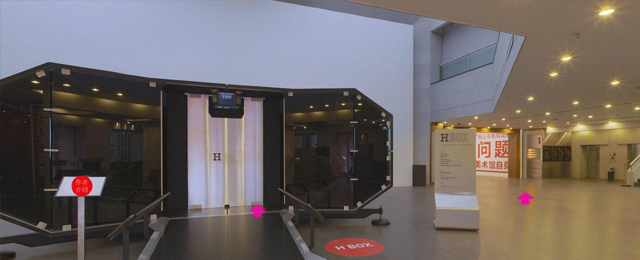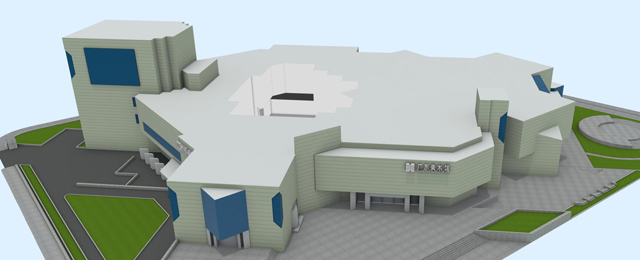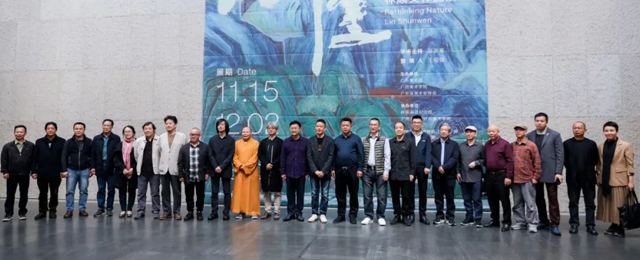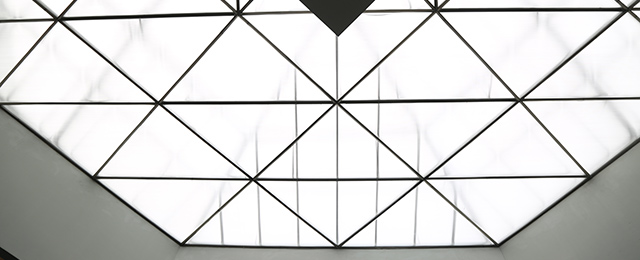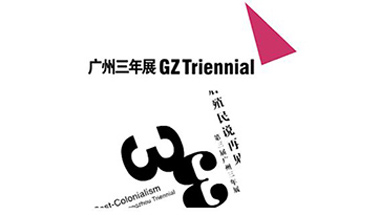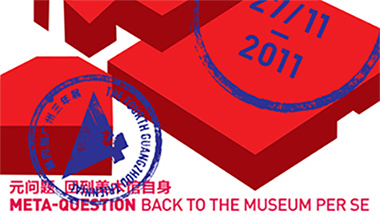自述
录入时间: 2006-12-27
1978年在中国杭州第一次拿到木刻刀,2002年在美国波特兰丢了仅仅打了样的最后一块铜版,做了二十五年版画。
为了这个二十五年的 “回顾展” ,我该写点什么。我想写写创作思想的变化,但不知从何说起。用词语写出每幅画创作中的思考、判断,实在是件困难的事。不要说时代的限制、政治的制约、他人的影响……就说那些纯粹属於个人的情绪,那转瞬即逝的情绪,还有那些连自己都不意识的“潜意识”……又有谁能说的清呢? 我在几个月的时间内,三易其稿。创作思想的变化,就像文稿的删除,是个“减”“损”的过程。这些年我就是走着一条从“刻舟求剑”到“心领神会”到 “身体力行”的路。
木刻组画《秋瑾》是在浙江美院做研究生时的毕业创作。1979年冬开始构思、构图。与同学和导师们商量研究后,在1980年夏天完成。描绘秋瑾,是因为我有话要说。从十几岁知道她之后,她的悲剧长久地感动着我:先觉者的慷慨牺牲,年轻母亲对祖国的热爱,还有黑暗中国的麻木不仁和深入骨髓的腐败……我现在仍能记起在版画系楼梯下面的那间小库房里,每天流汗流泪刻《秋瑾》的情景。那时的心情是悲愤的,报上一直在登载张志新的消息,那又是一个为追求真理而牺牲的年轻的女人,一个生活在自己身边的女人。 整个创作过程中,我始终带着强烈的情感和明确的表达意愿。这组作品显示了最初我学到的艺术创作规律,及那个时间、环境对我的影响。
1986年法国文化部艺术交流处要组织一次中法艺术家、教师的交流。很幸运的我被邀请去法国,我现在还能记起我们参观蓬皮杜中心看到当代西方的作品的兴奋心情,此前我只知道法国印象派。我还记得卢浮宫的负责人陪我们参观富丽堂皇的卢浮宫时,我却想到了离开北京前参观的故宫:坑坑凹凹的方砖地,昏暗的光线,墙上挂着的年代久远、颜色黑黄的绢画已不平整……我深受刺伤。我们被送出大门穿过马路时,我已忍不住哭了起来!1976年后,中国大变,中国艺术大变。“改革开放”的大潮,将10年“文化大革命”后的中国和大部分中国人冲得站不住脚,冲得晕头转向。我们将目光转向西方,惟恐落伍,我亦在其中。当我在法国睁大眼睛看“新玩意”时,法国的艺术家、教授,却一直询问我们中国的“旧东西”,我们古老的哲学及文学经典!回国时路经香港,我在书店挑了《易经》、《老子》。法国之行成了我反过来找“祖宗”的转折点。
与《秋瑾组画》大不相同的是1992-1994年做的一批铜、石版画。那两年我生活在法国, 那是唯一的一段身心真正放松的时间。脱离了烦琐的教学与家务,一个人住在语言不通的他乡,得到了一些在忙乱生活中少有的感悟。我当时曾用 “你听、你看、你尝、你闻,但不要问 ”一语来命名自己的作品。在那里,我确实也知道了如何运用自己当下的身心去感受事物,而不是用观念去认识事物。
记得在法国南方Aix市的一个假日,到处不见人。我一个人走出学生宿舍到了学校,开门、然后锁门,一层层的进去,最后把自己锁在大工作室,在工作台前坐下。习惯但很无聊的拿起毛笔沾了墨水,拿过桌上扔着的一张印坏的铜版画,顺手在四角点了一些点,从1到4。拿个图钉,走到墙边,把画钉到墙上。回头坐下来,又拿起第二张纸,在中间点了5×5个点,拿个图钉,把画又钉到墙上。再走回来,坐在位子上一看,血一下子涌上头,心脏猛地跳了起来--我第一次被自己的画感动成这样。(1994年在巴黎办个展时,画廊负责人一下子就挑走了这两幅。她喜欢。我知道那天确确实实的是发生了什么。)
很多“明白”只是一下子,你不知道它从哪儿来。就好像初春时的树枝一下子冒出了绿芽。其实整个冬天,它一直在聚集,萌发只是最后的那一下。又一次,一个人在Aix的乡下散步。一抬头看到眼前矗立着一面老墙,规则、又大小不齐的石块砌成一面。看上去有说不出的美感。一下子我明白了为什么我喜欢坐在海边看海浪,站在山顶看远山。这些有变化的重复、重叠的景色就是美啊!就像我们听的音乐、读的诗歌,及装饰自己房屋的图案、身上穿的花布、甚至於静坐时不停持念的咒语。重复而又有变化,就使得原有的意义变得不同,对身心发生不可思议的影响。
那两年中我常从Aix市去到中部的里昂市,在U.R.D.L.A.和ALMA两个版画工作室学习铜、石版技法。铜、石版画的技法十分复杂、繁琐,尤其是石版画,一件作品从磨版、描绘、封版、洗版、腐蚀、擦版、上墨、再腐蚀、封版、再洗版……最后调机器压力,浸泡纸张。然后手工擦版、上墨、放纸、摇机器……一张张手工印出来。每一件作品的完成,右手臂总要动上几千下!特别是我喜欢的水墨效果的制版和印刷真是繁杂得很,稍不留意版就“糊”了,变成一团漆黑或被完全腐蚀掉了……每天早上九点进工作室,下午六点回住处。第二天同样……在这么重复、枯燥的“体力劳动”时,谁会想到“创作激情”或者“艺术家使命、灵感”?信手在石版上涂抹的一些东西,那完全是无心的!就是这些无意义的点、划日后越来越感动了我。可否说那是因为返复枯燥的感觉让习惯性的思虑逆反式地静了下来,甚至中止。当思维、理性深感疲劳时,潜意识中个人的内心独白浮现出来。那是来自生命深层的,没有被“共识”污染的一些东西。真是奇妙,一直苦苦追求的自我意识的突破,在重复、无聊的“技法练习”中完成了。
回国后在1995年举办个人展览时我写:“1992年一月至1994年五月我在法国工作和学习……,两年多的时间生活简单而清静,有足够的时间独处、思索、阅读与内省。我尝试着扔掉以往所学习到的一切。这过程艰难而缓慢,有时显得毫无成效。但这远远比起我以往的种种追求有意义。我逐渐学会随心而画,丢却工作前的 “苦心”;逐渐学会做事及与人相处中的毫无目的。我们曾多么习惯於为了……为了……为了……。我们曾多么需要给每一件事每一个东西甚至每一个闪念安上一个名义,以便使它区别於其它。我们丢失自己的真率太久,忘却自己的童年太久,我们活着,但已不认识生命”。
1998年,利用去德国展览的时间又去ALMA做了些小铜版。它们不再完全是点、划,开始显示出具体的内容,我亦恢复了中断十几年的写生。当时对自身放松后与自然的相互感应已有所觉察。我无意中完成了 “日记” 形式的装置作品《海螺日记》:将近有四个月的时间,我每天面对着对象无目的的信手写生。排列悬挂后,让我「看到」好与坏的相对性;宏观与局部的不同。其实变化、运动就是美。好与坏等的相对观念是人类局限的形式界定。宏观后的观察后所受的感动超越了一般意义上的爱。
2000年开始留居美国,这一计划外的生活变动,造成我第一次要自己为生存而负责。百分之百的要将“清谈”转成“实行”。在思想可以十分自由,而生存压力变得很大时,老子和佛经成为每日必读的“生存指南”。读老子会读到泣不成声,圣贤的一句话会让人猛然觉醒。那是一种身心的感动,那是由於思想境界的变化,身体内在状况的变化,引起你与宇宙间某种能量瞬间的沟通。“烦恼即菩提”,真是如此!事后慢慢不断体味其中深意,身心就这样慢慢地打开了。玄而又玄的“道”变得那么平实,圣人说过的话语变得越来越可信可行,新事物的创造就在这时自然的发生了。
感谢-早就该做的一件事
我活到中年时仍然是一个无所用心、随波逐流的人,一直随着外界因缘的变化过着或顺或逆的日子。一直有明白人善意的帮我做了一些选择,使我顺利地度过人生的一些关卡,甚至得到一些荣誉。有些帮了我的前辈,至今也未和他们谋面。吴冠中先生就是其中之一。1980年的《秋瑾》获奖据说是由於吴先生与詹建俊先生的提议。
帮我留在美国的Gordon Gilkey先生是美国第一的私人版画收藏家, 在他2000年逝世后的报导中说“他曾在二战中帮助德国大艺术家贝克曼(Max Beckmann)移民到美国,在2000年他又帮助中国艺术家王公懿获得在美国长期居留的签证。她在他的私人工作室工作并得到他个人授予的奖学金。”本书中为我撰文的法国教授Henriette Champetier de Ribes,只是见到朋友寄给她我的小画册就帮我操办了两次在巴黎的展览。我一直都能遇到好的老师:我所以能对画画产生兴趣是因为初中的图画老师李文珍;我所以能进入大学是因为我的第一个上级领导郭均;我所以能出国开阔眼界是因为当时并不相识的法国朋友。还有教我石版、铜版的好友Sylvie Maurice 和Marc Melzassard。教我静坐的老师……他们帮我打开了一扇扇的门。现在我常常请教的那些人,往往坦诚的说他们自己遇到的问题比我还多。他们向我敞开他们的生活,不厌其烦,却又不露声色的引导着我在平等的心境中向所有的人学,向自然学。在此我不能一一细说所有帮助过我的长辈、老师和朋友的名字,总之,我感谢他们!
最后,不能不表达的是,对为我举办“回顾展”的广东美术馆诸多友人的衷心感谢!
王公懿
2006年秋于美国波特兰
PREAMBLE
In 1978, I used my first wood-cutting knife in Hangzhou, China. In 2002, my last etching plate was accidentally discarded after two trial impressions in Portland, Oregon.
Twenty-five years as a print-maker. Twenty-five years in a blink of an eye.
In an attempt to introduce my prints for this exhibition and publication, I have, for many months, strolled down memory lane, which is not always smooth and straight. As a matter of fact, it has many sharp turns, full of surprises and setbacks. Trying very hard to clarify my thoughts by putting them into words, I have a chance to examine how my works have evolved, changed and progressed. After three rewrites, deleting many pages, it turns out to be an interesting “subtracting” process. This retrospective exhibition became an introspective search for myself.
Qiu Jin, a wood-cut series consists of 7 prints (1979-80) was my thesis project at Zhejiang Art Institute in China. Qiu Jin’s (1875- 1907) martyrdom has etched in my mind since I was a school girl. As a woman, an intellectual and revolutionary living in a corrupt and tumultuous time, her pathos, anger and courage became a catalyst for my strong emotional outlet after the Cultural Revolution. The prints were executed with consummate passion and intention. Thoroughly planned, discussed, and researched (I even spent several days living at Qiu Jin’s house.), the prints reveal the creative process of my early works in China.
During 1986-87, I was selected as a visiting artist to live in France. It was my first time abroad. After visiting Pompidou Center and Louvre Museum, I burst into tears, being intensely stimulated and thrilled; at the same time, I was deeply hurt by the comparison to the crudeness and coldness of China’s Palace Museum. As part of the ill-fated generation under the depredations of Maoist excesses for all things “new” and “Western,” we lost our footing, our tradition and identity. On my way back to China, I bought several books of Chinese classics, like I-Ching and Lao-Tze. Paradoxically, a trip in quest of new things turned out to be an urgent homecoming to my own culture and tradition.
After Qiu Jin, most of my works do not have a clear subject or thought-out plan. Fragment, impetus, or momentum replaces my early “creative process.” From 1992 to 94 I lived in France again through a generous grant. Away from my duty as a mother and teacher, even detached from the language and environment I was familiar with, I was automatically immersed in daily Zen-like practice: “Listen, look, taste, and smell, but do not ask.” For me, it is a beginning to learn how to comprehend something not by way of logical thinking but through immediate physical perception.
I remember especially one holiday weekend at Aix-en-Provence. I was walking to the campus from my dormitory. Not a single soul was there. I opened a door and locked it behind me, another door was unlocked and locked and then another…. Finally I was alone locked in a spacious studio. Sitting in front of my work station, by habit, I took a paintbrush and dipped it in ink. Carefree and careless, I put a few dots, from one to four, at the four corners of a discarded print paper. Tacking it on the wall, I walked back to the table and put 25 dots in the middle of another piece of paper. Again, tacking it on the wall and returned to my seat. I raised my head and looked at them. In that instant, my blood rushed to my head and my heart throbbed in rapture. For the first time, I was moved by my own work. (During my personal exhibition in 1994, Paris, those two paintings were immediately chosen and collected by the director of the gallery. She liked them. Something must have had happened in the studio.)
Another incident occurred when I strolled along a rustic French country road; a tall, weathered stone wall suddenly came into sight. I was mesmerized by the spatial sequencing of the stone layers. Though repetitive in patterns, it became rich and alive with blocks of irregular shapes and sizes. A mythical sense of beauty arose through the formal element of repetition and variation. Suddenly I realized why I like to look at the ocean waves beating endlessly into the horizon or mountains dissolving into the skies. Certain energies are created through repetitive progression, and new meanings can be extracted from the cyclical and rhythmical movements. Music, poetry, patterns on wallpapers or genetic mappings, even sutra chanted during meditation entails the same kind of beauty and energy via repetition and variation.
During my stay in France, I learn the techniques of etching and lithograph at two studios in Lyon, U.R.D.L.A. and ALMA. The making of etching and lithograph is an extremely complicated and laborious work, especially the latter. Numerous repetition of damping, wiping, drawing, etching, inking, rubbing, washing, pressing, editing, effacing. . . .Each finished print is a product of several thousand hand-rollings back and forth from the press machine. My favorite water-ink style lithographs proved to be most difficult. A small technical miscalculation or negligence would make the prints smudgy or being completely “eaten up.” Every day from 9:00 to 6:00, I toiled away in the tedious “manual exercise.” It became an absurd luxury to talk about the idea of “creative passion,” the “principle of aesthetics,” or the “obligation of an artist.” Curiously, the different shades of lines and dots that I accidentally scribbled and rubbed on the stone-block asserted a lively composition and lush physicality. Not unlike the dot-grid which I painted alone in the locked studio, its power lies in the recognition of chance, a courtesy to matter, and an unconscious revelation of self in a state not “polluting” by ideology, desire, or intention. It was my personal breakthrough. Miraculously I accomplished it by tedious and toilsome skill practices.
In 1995, at the first exhibition after I came back from France, I wrote:
For the past two years in France, my life had been very simple and peaceful. In this state of solitude, I had time to think, to read, and to look closely into myself. I tried to rid myself of the things I had learned before. It proved to be slow and difficult. Most of the time, my efforts were in vain. Nevertheless, it was still far more helpful than what I had done before. Gradually, I learned to be more at ease with my work, not burdening myself with “meanings.” Without setting up a goal or any expectation, I learned to be more casual with things or people. “For the purpose of this…, for the reason of that…,” we are so used to assign a value or a reason to everything, even a small object or a flash of thought. We have lost our naivety; our childhood is long forgotten. We are alive but we do not know life.
In 1998, after my exhibition in Bonn, Germany, I went to ALMA studio again to do several small-scaled etchings. Instead of simple dots and lines composition, more concrete content appeared. These prints are more like still-life practices of leaves, flowers, objects, words…. I could feel my relaxed body vibrate with them. In other words, the subconscious monologue had become a rich dialogue which manifested itself in the balance of abstract and representation, the dynamic of concept and chance, and the tension between emotional contents and pure forms. In that year, I finished an installation piece called Seashell Diary. It was literally my daily still-life diary of an object. For four months, I painted 140 “portraits” of a seashell with no pre-formulated design in mind. After hanging them on the walls, I saw clearly the relativism of all things. It presents the lack of firm distinction between good and bad, big and small, and between the partial and the whole. Beauty arises from the movement of these various relations. Only when we can put everything in perspective, disregarding the categorically opposing ideas, then can we be touched by grace and love.
In the year of 2000, I moved to the United States. I suddenly needed to support myself. The pressure of making a living became a huge burden. Lao-Tze and Buddhist scriptures were no longer words of wisdom; instead, they were my practical “survival guides.” I was immensely moved when reading Lao-Tze, with unstoppable torrents of tears. Inside my body, something had changed. The keenness of thought led to an intense physical awakening, thence, germinated a new kind of energy. Looking back at those difficult moments in my life, I realize how significant and helpful they are. Buddhist’s words say “suffering is bliss.” I have leaned how to open my heart. I have become freer, happier, more tender and spontaneous. What used to be arcane and fascinating is now normal and clear.
This is my journey. My footprints are recorded by the prints here. Looking back, my heart is filled with appreciation and gratitude on each step I tread. I would never have finished these works without many people’s kindness, support, and generosity. Mr. Wu Kwan-Chung who I have never met is one of them. With his endorsement, along with Mr. Zan Jian-Jun’s suggestion, my thesis project Qiu Jin series was awarded the first prize in National Art Competition in 1980. I am particular grateful to Mr. Gordon Gilkey whose print collections are the most significant in USA in quality and quantity. His obituary in 2000 wrote that he helped German artist Max Beckmann during World War II, and recently he also helped Chinese artist Wang Gongyi to obtain permanent residency and scholarship to work in his studio. I am indebted to Professor Henriette Champetier de Ribes who enthusiastically organized two Paris exhibitions for me. And finally my thanks go to my middle school teacher, Lee Wen-Jen for his encouragement and inspiration, my supervisor Kuo Juang who guided me at crucial moment, my dear French friends and artists, Sylvie Maurice and Marc Melzassard, my Buddhist mentor who led me to another state through meditation, and many other friends and people who show me that life can be so ordinary and yet so incredibly miraculous.
Wang Gongyi
Autumn 2006 in Portland, Oregon
Translated by
Jenn J, JIU
开放时间:每周二至周日9:00-17:00(逢周一闭馆)
每日16:30停止入场
地址:广东省广州市越秀区二沙岛烟雨路38号
咨询电话:020-87351468
预约观展:
-
广州 影像三年展 2025 Guangzhou Image Triennial 2025 ...

